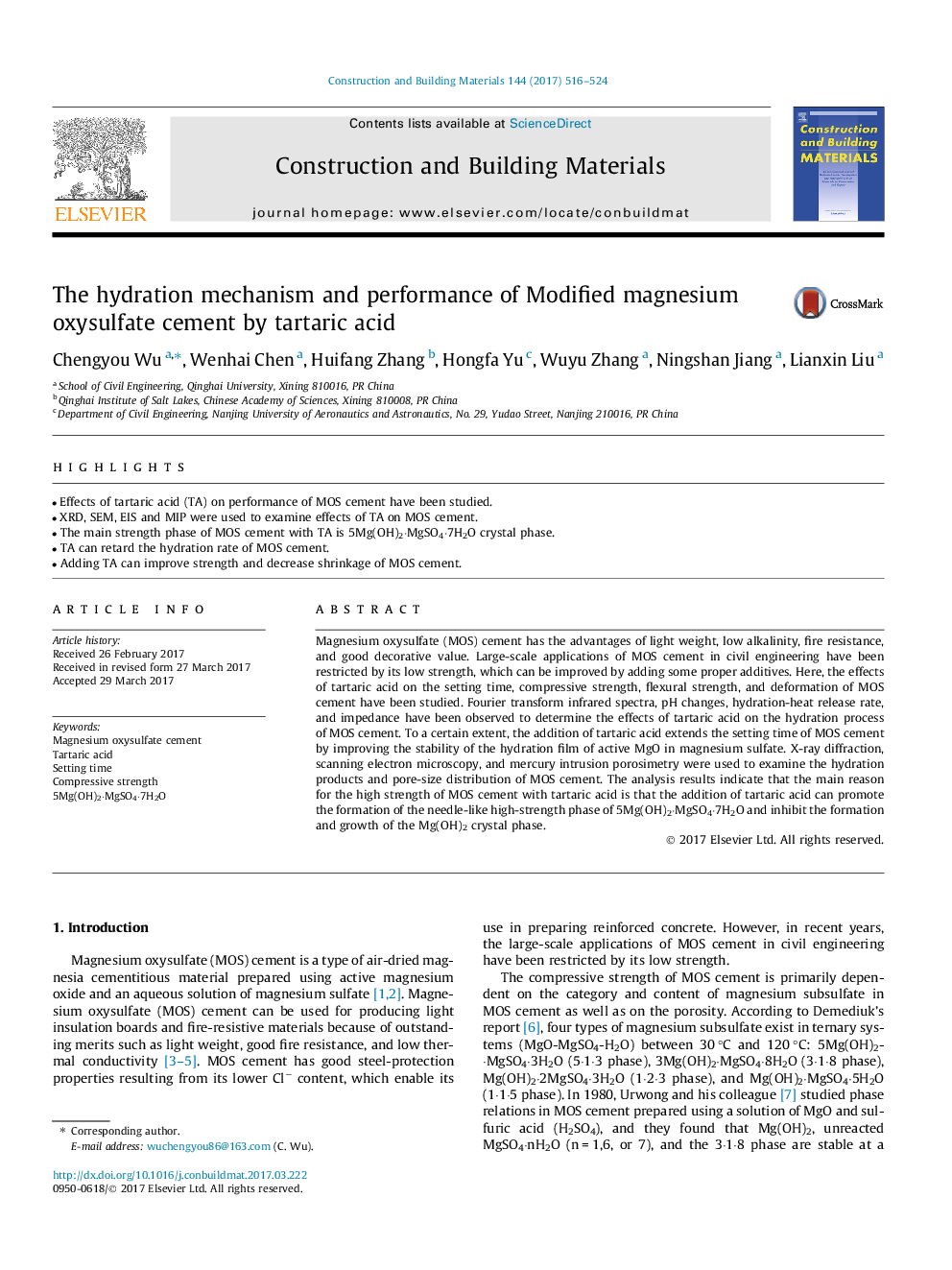| Article ID | Journal | Published Year | Pages | File Type |
|---|---|---|---|---|
| 4913188 | Construction and Building Materials | 2017 | 9 Pages |
Abstract
Magnesium oxysulfate (MOS) cement has the advantages of light weight, low alkalinity, fire resistance, and good decorative value. Large-scale applications of MOS cement in civil engineering have been restricted by its low strength, which can be improved by adding some proper additives. Here, the effects of tartaric acid on the setting time, compressive strength, flexural strength, and deformation of MOS cement have been studied. Fourier transform infrared spectra, pH changes, hydration-heat release rate, and impedance have been observed to determine the effects of tartaric acid on the hydration process of MOS cement. To a certain extent, the addition of tartaric acid extends the setting time of MOS cement by improving the stability of the hydration film of active MgO in magnesium sulfate. X-ray diffraction, scanning electron microscopy, and mercury intrusion porosimetry were used to examine the hydration products and pore-size distribution of MOS cement. The analysis results indicate that the main reason for the high strength of MOS cement with tartaric acid is that the addition of tartaric acid can promote the formation of the needle-like high-strength phase of 5Mg(OH)2·MgSO4·7H2O and inhibit the formation and growth of the Mg(OH)2 crystal phase.
Related Topics
Physical Sciences and Engineering
Engineering
Civil and Structural Engineering
Authors
Chengyou Wu, Wenhai Chen, Huifang Zhang, Hongfa Yu, Wuyu Zhang, Ningshan Jiang, Lianxin Liu,
